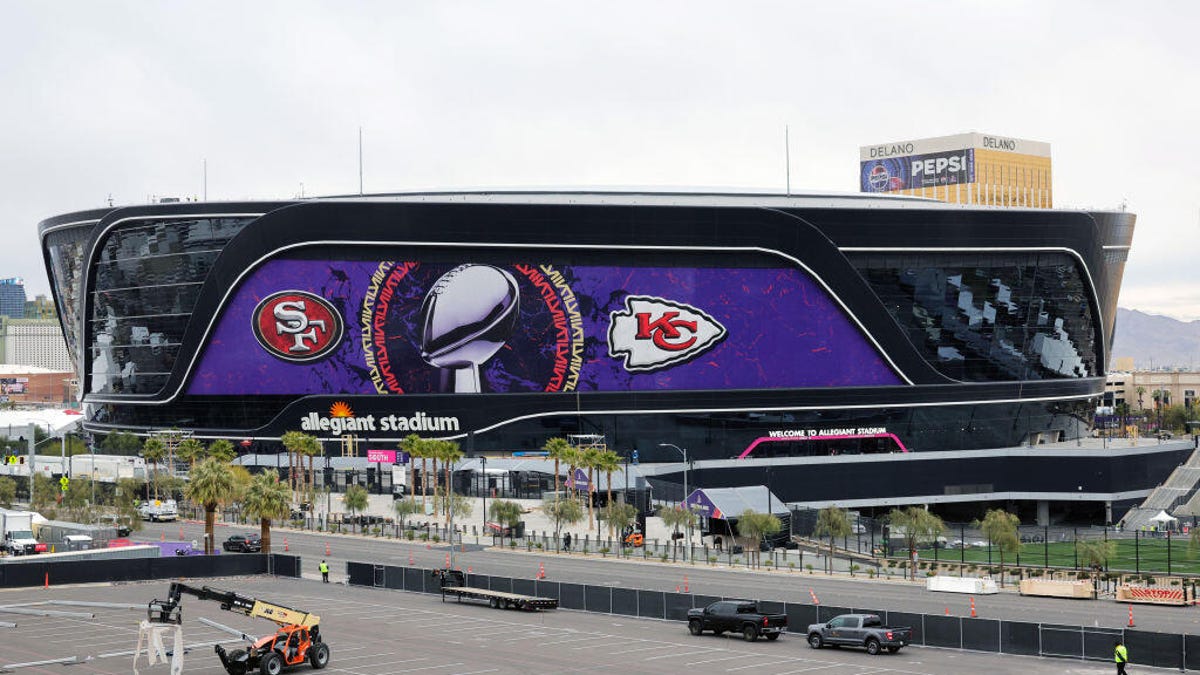This Year's Super Bowl Stadium Is Powered by Renewable Energy
Solar and other renewable energy sources provide 100% of the energy for Allegiant Stadium. All those private jets are still burning fossil fuels, however.

Allegiant Stadium is powered by renewable energy.
When the Kansas City Chiefs and the San Francisco 49ers face off in Las Vegas this Sunday, they'll be doing so under lights powered by renewable energy. Allegiant Stadium, this year's Super Bowl host, gets 100% of its power from renewable sources.
The stadium actually achieved that milestone in October, according to a press release from the Las Vegas Raiders, the stadium's main tenant. The team and the stadium's website don't clearly spell out what renewable sources helped them achieve that goal, but more recent reporting says a big chunk of it comes from a Nevada-based solar installation. The Las Vegas Raiders have agreed to purchase power from the solar farm for 25 years, CBS reported.
Nevada gets 23% of its energy from solar and 37% of its energy from all renewable sources combined, according to the US Energy Information Administration. Rapidly shifting from fossil fuels to renewable sources is one key step in avoiding the worst effects of human-caused climate change.
Can solar panels save you money?
Interested in understanding the impact solar can have on your home? Enter some basic information below, and we’ll instantly provide a free estimate of your energy savings.
Big-time sporting events at major stadiums are energy-hungry affairs. A stadium can require 5-10 megawatts of electricity during an event like an NFL game, enough to power around 5,000 homes. Covering that demand is certainly a step in the direction of sustainability.
But an event like the Super Bowl has a footprint that expands beyond the walls of the stadium. While electric power generated from fossil fuels is the second largest source of greenhouse gas emissions, transportation is the largest and accounts for 28% of US emissions, according to the Environmental Protection Agency. Air travel to and from the game is part of an aviation industry that accounts for 2% of global energy-related carbon dioxide emissions, according to the International Energy Agency.
While much has been made of Taylor Swift's expected trans-Pacific flight to get to the game on time, her flight would be only one of an anticipated 1,000 private flights into Las Vegas for the game, The New York Times reported.
If you're staying in on Super Bowl Sunday (maybe your private jet needs repairing), find out how to stream the game and how to get your TV game-ready.



